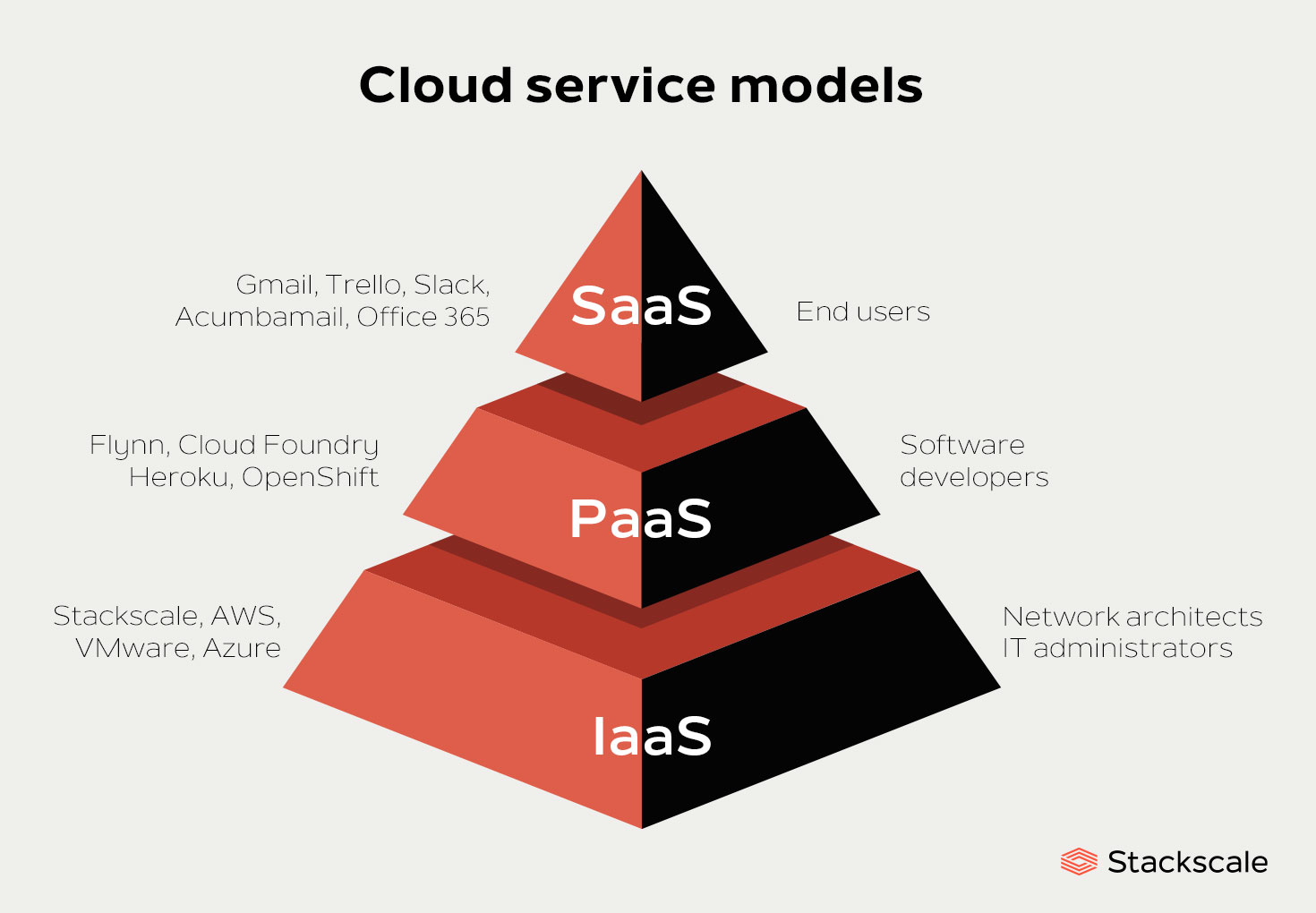Cloud computing services have brought forth a host of exciting opportunities for global enterprises in terms of flexibility, customizability, and cost optimization. Data-centric services like networking, storage, and server maintenance along with software and hardware operations are outsourced to third parties over the internet. This makes it easier for businesses to free up resources for allocation to their core areas of operation.
Cloud services are usually offered in three basic models: Software as a Service (SaaS), Platform as a Service (PaaS), and Infrastructure as a Service (IaaS). Each of these models has its inherent delivery characteristics, mechanisms, and advantages based upon individual business requirements.
SaaS: Software as a service
Software as a service is one of the most popular cloud-based services delivered over the internet. SaaS applications mostly run through web browsers, which eliminates the need for downloads and installations on individual computers. Google G Suite, also known as Google Apps, is one of the most popular SaaS applications, along with Dropbox, Salesforce, and Cisco WebEx.
- Delivery Model
SaaS vendors provide users access to software residing on a remote cloud network mainly through a subscription model. Users can use the applications virtually from any part of the world over the internet or by using an API. In this model, cloud computing services providers manage all technical issues ranging from data storage to servers and middleware, and users don’t have to worry about hardware and software updates. Cloud storage ensures the security of data and equipment failures or malware in local devices do not result in loss of data.
This model is perfectly suitable for startups and new business ventures who do not wish to invest heavy resources on servers and customized software development. Short term projects requiring fast, easy, and affordable modes of operations will find this model a convenient option to start with.
- Limitations
SaaS applications are not designed for interoperability and integration with existing services, data and on-premise apps may prove difficult. Clients can also face issues of vendor lock-ins in the long run, as all vendors do not follow standard APIs and protocols. With SaaS applications coming in standardized forms, lack of control over customization and limited choice of features may also prove to be major hindrances.
PaaS: Platform as a Service
In this mode of operation, a third-party enterprise provides a cloud-based infrastructure for in-house developers to build, deliver, and manage applications. PaaS delivers a secure and robust framework for customizing and developing applications where third-party providers manage the server, storage, and networking.
- Delivery Model
PaaS operates on a model similar to SaaS, with the only difference lying in independent software management. PaaS allows cost-effective development of customized applications without having to worry about software maintenance. Compared to full scale IT development, the PaaS model saves on a dedicated hardware infrastructure along with software management.
PaaS is a highly scalable model as it works on the virtualization technology and resources can be scaled up or down depending upon business requirements. Developers in the PaaS model can avail support for app testing and deployment as additional service features. The integrated databases and web services are made accessible to multiple developers working on the same project, facilitating collaborative development.
- Limitations
In the PaaS model, organizations can run their preferred applications with ease, but the data resides on third-party servers controlled by cloud computing service providers. This may pose certain security risks and may be an issue of concern. PaaS applications pose problems of vendor lock-ins and integration with existing systems on account of configuration and standardization issues.
IaaS: Infrastructure as a service
IaaS is the most flexible cloud operating model which allows enterprises to purchase networking and storage resources on-demand. This is a highly scalable service where vendors like Amazon Web services (AWS), Google Compute Engine, Microsoft Azure provide clients with pay-as-you-go access. Instead of investing in hardware outright, companies pay cloud computing service providers for IaaS as per requirement and save on buying and maintenance costs. Organizations utilize their platforms and developed managing remote workers software while using the infrastructure of vendors.
- Delivery Model
IaaS lets businesses have total control over their entire operation cycle without having to worry about maintaining an in-house data center. Access to the cloud data center is provided through an API or a dashboard. Businesses have the full responsibility of managing their applications, middleware, operating systems along with their data. The dynamical and flexible nature of resource utilization as per requirement makes the model cost-effective and directly related to consumption. Startups and small companies unsure of their initial growth prospects or experiencing rapid growth can use IaaS for complete flexibility and scalability.
- Limitations
The IaaS model requires highly trained and experienced professionals for effectively managing infrastructure. Clients require to be highly alert about the security of data and adequate backup provisions to maintain business continuity.












